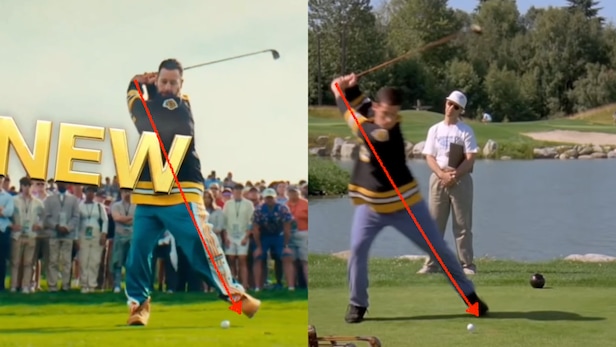Get Up & Down From Two Tricky Spots – Australian Golf Digest

- by Admin
- June 12, 2024
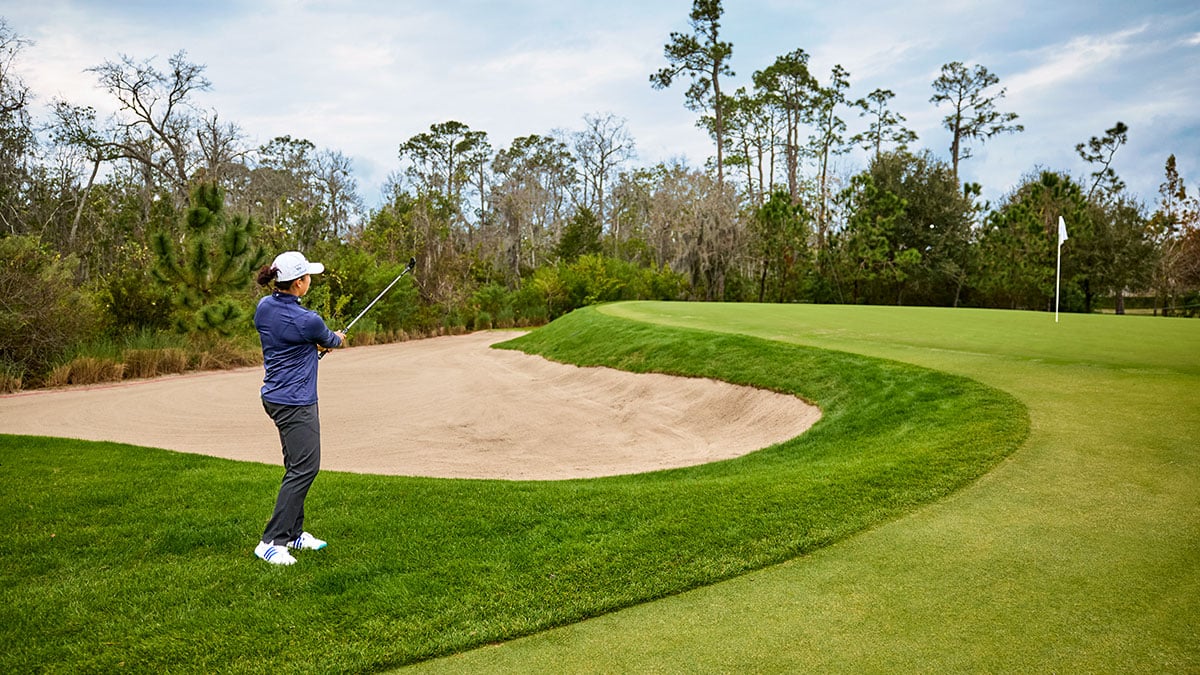
LPGA Rising star Ronni Yin demos some savvy ways to save par.
Photographs by Jensen Larson
If you aren’t yet familiar with the golf skills of rising LPGA Tour star Ruoning Yin, an introduction is in order. “Ronni,” as she’s called, went from missing the cut in more than half the events she played in her first LPGA Tour season in 2022 to winning a major (KPMG Women’s PGA Championship) and rising to No.1 in the Rolex World Golf Ranking in 2023. She also won the DIO Implant LA Open and had eight other top-10 finishes last year. That’s a pretty big upward move in a short amount of time- – and somewhat historic. Yin, 21, is only the second Chinese golfer to reach No.1 in the Rolex ranking, joining Shanshan Feng.
One of the reasons she improved so quickly is that she learned how to routinely recover from bad shots. Yin, who ranked second on the LPGA Tour in strokes gained/scrambling last season, got up and down two out of every three times she missed the green in regulation. What’s her secret?
She’ll share some technique tips in a moment. First, Yin says, you might want to think about your mind-set. A big part of improving comes from knowing you’re going to miss the green- – a lot. You have to be prepared to save par from a less-than-ideal lie. You need a smart plan to get the ball close to the hole and the familiarity and confidence to pull it off.
“Having a good short game is about consistently hitting the ball with the centre of the clubface,” she says. “But I see amateurs trying to hit really technical shots around the greens, even though they don’t have enough time to practise and develop the feel and skill necessary to hit those shots. Instead, go with the simplest shot for the situation.” An example: putting instead of chipping from just off the green in the fringe or fairway.
With input from her coach, Gareth Raflewski, here are Yin’s thoughts on getting out of a couple of the most common, yet tricky, jams all golfers face from just off the green.
Tricky Spot #1
When you have to fly it over something
Ronni says: If you’re in the rough and there’s something between you and the green that you have to carry, resist the urge to try a flop shot. It’s too tough to consistently execute. Instead, follow what I’m doing in these photos [above]. Grab your most lofted wedge, set up with the clubface and your stance a bit open, and set more of your weight on your front foot. This adjustment in weight will help steepen your angle of attack, which in turn helps you strike the ball with less interference from the grass. That’s key if you don’t want to leave these shots short. Don’t worry about the steeper angle lowering your ball flight. Opening the face slightly at address counters that. You’ll still have enough loft to fly the ball over whatever is between you and the green.
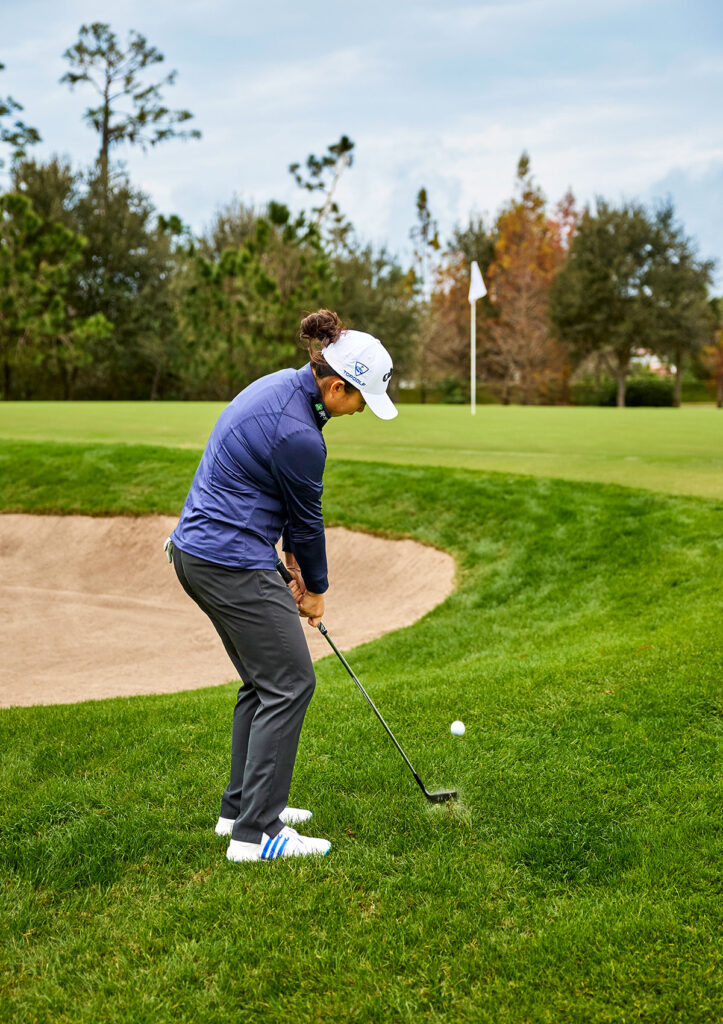
When you swing, keep pressure on that front foot. It’s a short shot, so there’s no need for any weight shift; all the power you need will come from rotating your torso towards the target. Also, keep your wrists firm. Hinging and unhinging your wrists will make quality contact much harder to get.
Here’s one more thing to remember: when picking your target, know that the ball will come in high and soft. You won’t get a lot of roll, especially on a shot where you’re chipping into an uphill green that is pitched towards you [above].
Tricky Spot #2
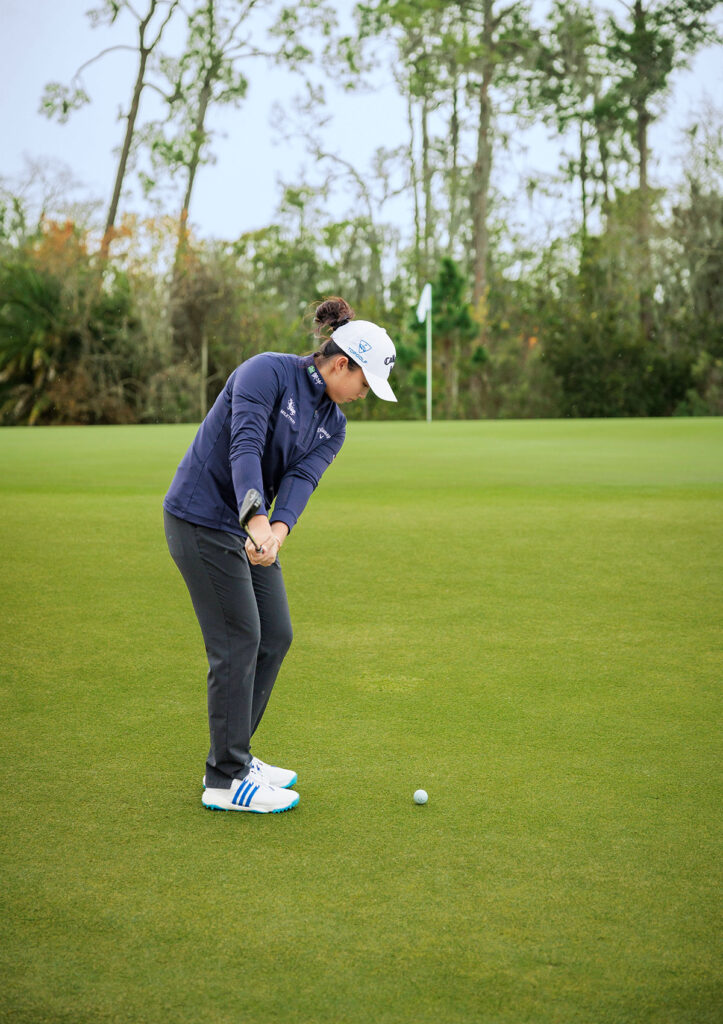
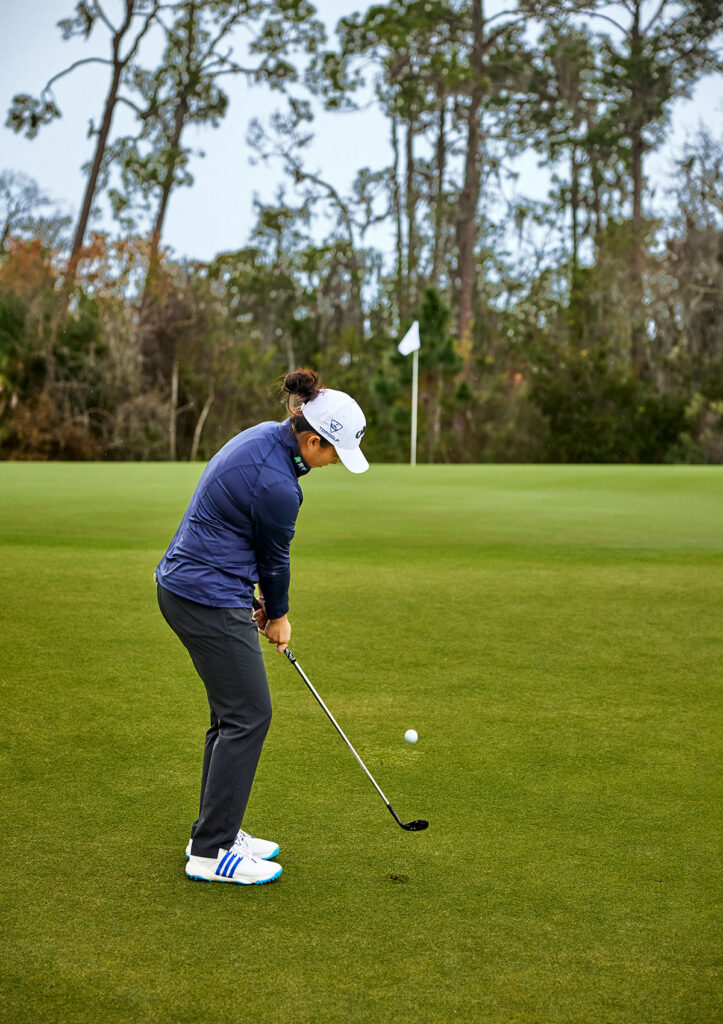
When you have to chip it uphill
Ronni says: When the ball is sitting below the green, especially when it’s on a tight lie like this [left], it’s common for amateurs to dig their wedge into the turf. The result is a chunk that doesn’t get to the green and, a lot of times, rolls right back to where you’re standing.
If this shot is tricky for you, start by making a few adjustments at setup. One of the reasons you might chunk this shot is because you’re leaning the shaft way forward, a prime digging position. Instead, I open the face a bit and then lift the heel end of the clubface off the ground slightly. This sets the shaft more vertical than usual, but more importantly, puts the club in a much better position to slide along the turf instead of digging into it. Just know that you’ll probably strike the ball higher on the face, which means it will launch higher [left]. Be sure to factor that into how far you want it to carry before it starts rolling.
Here’s another thought that should keep you from leaving this shot short: as you swing back and through, feel like your arms and torso are moving together. This will make your motion more consistent and controlled. To help you stay connected all the way past impact, think about the grip of your club going towards your left pocket. Also, don’t release your wrists. Any time you do that, you automatically make quality contact much harder to achieve.

Now make the putt
To capitalise on your great recovery shot, be sure to hold your finish when you putt – just like you would for a full swing. It’ll keep the ball on the line you chose.
I also do this drill [right] to build confidence. Try to make a putt from each tee station around the hole. If you can’t make them all consecutively within 20 minutes, tap out. This is about keeping your focus on makeable putts. Do that, and you’ll save a lot of pars.
The Latest News
-
December 26, 2024Australian travel vlogger finds the ‘best alcohol on the planet’ in India | – Times of India
-
December 26, 2024What Emma Navarro has done before the Australian Open which has really impressed Jon Wertheim
-
December 26, 2024“Not what I wanted” – Halep withdraws from Australian Open 2025 due to injury
-
December 26, 2024Texas Freshman Tennis Star Maya Joint To Turn Pro Ahead Of Australian Open
-
December 26, 2024Injured Halep forced to pull out of Australian Open


